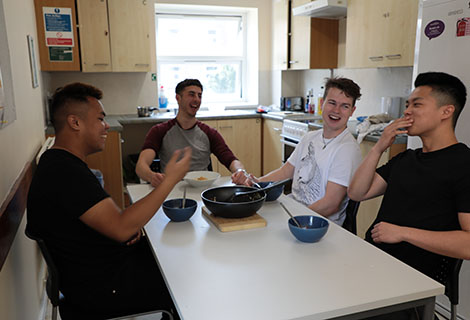
Accommodation guarantee
We guarantee a single room in halls to every Clearing and Adjustment student (conditions apply).
Find out moreLive polls and video summaries are making a big bang at the University of Southampton, where interactive teaching on the early universe has been honoured with an Excellence in VLE Award.
The School of Physics and Astronomy module was nominated by its students for the Virtual Learning Environment (VLE) accolade, which celebrates effective online learning materials and student support.
The popularity of the course has prompted lecturers to split the content into two modules covering Cosmology and Physics of the Early Universe for the 2019/20 academic year.
The topics are available to third and fourth year students and taught by Dr Francesco Shankar and Professor Alexander Belyaev.
“We are honoured that our efforts have been awarded as one of just three prizes across the education of the whole University,” Alexander says. “I believe that the quality of teaching in Physics and Astronomy is always improving and it’s pleasing to know that our innovative methods in this fascinating and contemporary module are being welcomed by students.”
Around 50 students attended the course in 2018/19 and benefited from short 10-15 minute video summaries of lectures as well as ‘Explain everything’ videos of the topic’s complex mathematical content.
The lecturers also utilised a real-time polling app to ask the group questions during the sessions which were then answered by phone and displayed live at the front of the venue.
Comments from Physics and Astronomy students on completion of the course included: ‘Outstanding content organisation and feedback’, ‘The lecture summary videos were helpful’ and ‘The quantity of useful supporting content was on another level’.
The module content is divided across its two expert speakers, with Francesco covering cosmological principles and observables, geometry and the Friedman expansion of the universe, while Alexander teaches the Big Bang model, the early stage of universe expansion, inflation, dark matter and the concept of Big Bang nucleosynthesis.
This year saw the seventh VLE Awards hosted by the University’s Digital Learning team. Students are involved in the nominating, shortlisting and judging of the scheme, which is finalised in its latter stages with input from the University’s Associate Deans for Education and partnered online learning specialists.
Articles that may also interest you
An international research team led by the University of Southampton has identified several unusual properties of a hot wind’s violent outbursts around a black hole.
The astrophysicists, led by School of Physics and Astronomy Emeritus Professor Phil Charles, investigated the dense outflowing wind in Swift J1357.2-0933, an X-ray transient some 25,000 light years from earth.
The research observed ionised helium and hydrogen being emitted in bursts that repeated every eight minutes, the first time this behaviour has been seen around a black hole.
The international project, which included partners from Southampton, Oxford and South Africa, used data from the largest optical telescope in the southern hemisphere. Researchers have published the findings in the journal Monthly Notices of the Royal Astronomical Society.